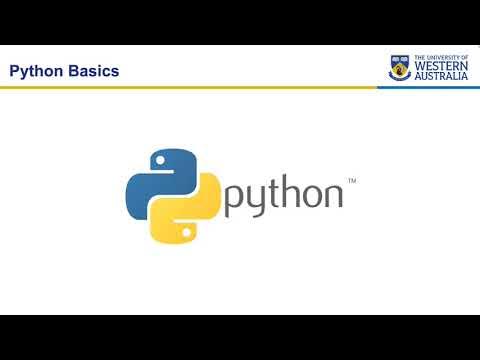Writing Your First LabVIEW Program
Summary
TLDRIn this video, Venite introduces the LabVIEW programming environment, explaining its core features and functionality. LabVIEW is a graphical programming platform where programs, called VIs (Virtual Instruments), are designed using two main windows: the front panel, which serves as the user interface, and the block diagram, where graphical code is written. The tutorial walks through the process of creating a simple program by adding a string constant to the block diagram and wiring it to the front panel. The run button is used to execute the program and display output, offering a quick demonstration of LabVIEW's intuitive graphical programming approach.
Takeaways
- 😀 LabVIEW is a graphical programming environment used for creating virtual instruments (VIs).
- 😀 A VI (Virtual Instrument) consists of two main windows: the Front Panel and the Block Diagram.
- 😀 The Front Panel serves as the user interface, allowing interaction with the program through elements like knobs, buttons, and graphs.
- 😀 The Block Diagram is where the functional graphical code is created using programming functions like structures and mathematical functions.
- 😀 Right-clicking on the Front Panel opens the Controls Palette, allowing you to drop user interface elements.
- 😀 Right-clicking on the Block Diagram opens the Functions Palette, where you can access programming functions.
- 😀 Every element placed on the Front Panel has a corresponding terminal on the Block Diagram for wiring and data flow.
- 😀 By hovering over elements in the Block Diagram, you can wire them to transfer data between the items.
- 😀 A string constant can be used in the Block Diagram to store a value (e.g., 'Hello, World').
- 😀 Running the VI (via the Run button) transfers the data (e.g., string constant) to the Front Panel for display.
- 😀 LabVIEW makes it easy to quickly develop applications using graphical programming, allowing for simple interaction and data display.
Q & A
What is LabVIEW and what is its primary function?
-LabVIEW is a graphical programming environment primarily used for data acquisition, instrument control, and industrial automation. It allows users to create programs using a graphical interface where code is represented as blocks, rather than text-based code.
What does 'VI' stand for in LabVIEW?
-In LabVIEW, 'VI' stands for Virtual Instrument. It represents a LabVIEW program, which includes both a user interface (front panel) and the underlying code (block diagram).
What is the purpose of the front panel in LabVIEW?
-The front panel serves as the user interface in LabVIEW. It allows users to interact with the program through controls (such as knobs and buttons) and indicators (like graphs and displays).
What is the role of the block diagram in LabVIEW?
-The block diagram is where the graphical code for the LabVIEW program resides. It is used to define the program's functionality by wiring together various functional blocks, such as numerical functions, logical operations, and data inputs/outputs.
What happens when you right-click on the front panel in LabVIEW?
-When you right-click on the front panel, you get the controls palette, which allows you to place user interface elements like buttons, knobs, graphs, and indicators.
What appears when you right-click on the block diagram in LabVIEW?
-When you right-click on the block diagram, you get the functions palette, which provides access to various programming functions, including numerical, Boolean, string, and other operations needed to define the program’s behavior.
How does the string constant in the block diagram relate to the front panel?
-The string constant in the block diagram holds a value (such as 'hello world') that can be wired to a string display in the front panel. This allows the program to display the constant value to the user when the program runs.
What is the significance of the wire in the block diagram?
-In the block diagram, wires connect different functional blocks, allowing data to flow from one component to another. For example, wiring a string constant to a string indicator lets the program display the string value on the front panel.
How do you run a LabVIEW program?
-To run a LabVIEW program, you click the 'Run' button located at the top left corner of the LabVIEW window. This executes the program, allowing the data and functions to operate as defined in the block diagram.
What is the process of creating a simple LabVIEW program?
-To create a simple LabVIEW program, you place user interface elements on the front panel, create corresponding functions in the block diagram, and wire them together. Once set up, you can run the program to see the results in the front panel.
Outlines

This section is available to paid users only. Please upgrade to access this part.
Upgrade NowMindmap

This section is available to paid users only. Please upgrade to access this part.
Upgrade NowKeywords

This section is available to paid users only. Please upgrade to access this part.
Upgrade NowHighlights

This section is available to paid users only. Please upgrade to access this part.
Upgrade NowTranscripts

This section is available to paid users only. Please upgrade to access this part.
Upgrade Now5.0 / 5 (0 votes)





